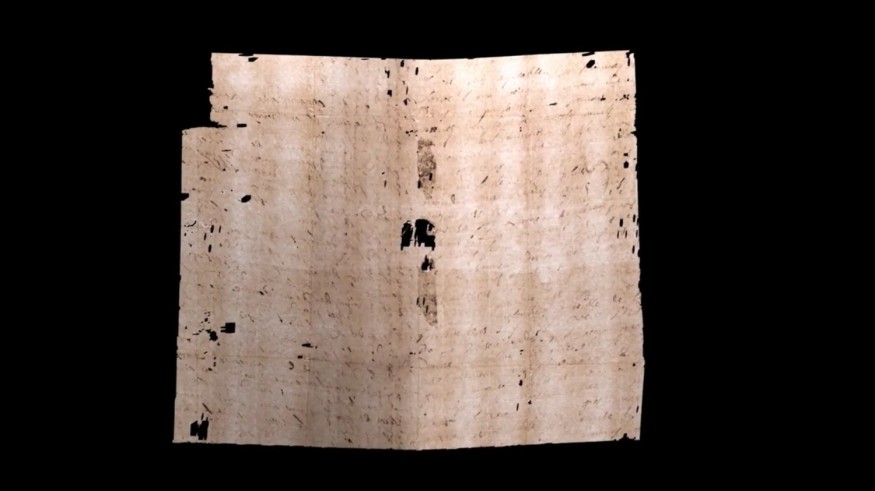An unopened letter first sealed about 300 years ago has been read for the first time using a high-tech scanner that digitally unfolded the letter to prevent damaging it.
The researchers from the Queen Mary University of London used a high-resolution X-ray scanner to examine the letter from 1697 sent back to the post office and was never opened, MailOnline reported. The letter was sealed using a "letterlocking" process that intricately folds and secures a paper to make its own envelope.
The Renaissance letter was from the Dutch postal museum collection dated July 31, 1697. Based on the scan results, the letter was from Jacques Sennacques to his French merchant cousin in the Hague. The former was requesting a copy of a death notice for another person.
The researchers believe that this novel technology could help historians study the context of sealed historical documents without damaging them.
The new technique of digitally unfolding a paper is described in full detail in a paper entitled "Unlocking history through automated virtual unfolding of sealed documents imaged by X-ray microtomography" and published in the journal Nature Communications.

High-Tech X-Ray Scanner Digitally Unfolds Unopened Letter from 1697
For many centuries, people have been using letterlocking when sending their letters since envelopes were invented in the 1830s.
Jana Dambrogio, a conservator with the Massachusetts Institute of Technology Libraries in Cambridge, Massachusetts, was intrigued by the trunk full of undelivered letters from the 17th century. So she decided to open one of the letters with her team's help and a high-resolution X-ray scanner.
Amanda Ghassaei of Adobe Research in San Francisco explained that the device was originally designed to study teeth. But in this study, NPR reported that the scanner was used to create a detailed 3D X-ray image of the folded Renaissance letter since the black ink contains metal that shows up bright in the X-ray like how bones would show up.
However, reading the contents of the letter is still challenging because the words are all jumbled up due to many layers of folded paper that were pressed together, making the words appear to overlap.
Their first try was using a brute-force of algorithm to study the letter, which ended in 2016. Since then, the researchers have been refining their process and tried to make it fully automated.
Importance of Virtually Unwrapping Old Documents Without Damaging Them
Renowned scholar W. Brent Seales from the University of Kentucky has explained and illustrated virtually unwrapping unreadable ancient scrolls in the past.
A press release from UCLA reported that Seales used this technology to the En-Gedi Scroll, which turned out to be "the oldest known Hebrew copy of the book of Leviticus other than the Dead Sea Scrolls."
He is impressed with the recent digitally opening of the unopened letter from the 17th century, noting that virtually unwrapping a letter without damaging it is a miracle. Seales believe that virtually unwrapping old documents could reveal the past.
There are still many unopened letters from the 17th to the 19th century that are waiting to be read. Historian Howard Hotson of the University of Oxford believes studying unopened letters could reveal trans-cultural global technological exchange patterns.
RELATED ARTICLE : Tel Aviv Researchers Unlock Genetic Mysteries of the 2,000 Year-old Dead Sea Scrolls
Check out more news and information on the Tech & Innovation in Science Times.
© 2025 ScienceTimes.com All rights reserved. Do not reproduce without permission. The window to the world of Science Times.










